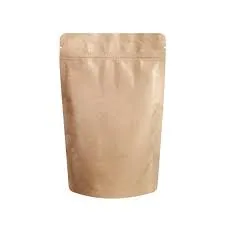- Afrikaans
- Albanian
- Amharic
- Arabic
- Armenian
- Azerbaijani
- Basque
- Belarusian
- Bengali
- Bosnian
- Bulgarian
- Catalan
- Cebuano
- chinese_simplified
- chinese_traditional
- Corsican
- Croatian
- Czech
- Danish
- Dutch
- English
- Esperanto
- Estonian
- Finnish
- French
- Frisian
- Galician
- Georgian
- German
- Greek
- Gujarati
- haitian_creole
- hausa
- hawaiian
- Hebrew
- Hindi
- Miao
- Hungarian
- Icelandic
- igbo
- Indonesian
- irish
- Italian
- Japanese
- Javanese
- Kannada
- kazakh
- Khmer
- Rwandese
- Korean
- Kurdish
- Kyrgyz
- Lao
- Latin
- Latvian
- Lithuanian
- Luxembourgish
- Macedonian
- Malgashi
- Malay
- Malayalam
- Maltese
- Maori
- Marathi
- Mongolian
- Myanmar
- Nepali
- Norwegian
- Norwegian
- Occitan
- Pashto
- Persian
- Polish
- Portuguese
- Punjabi
- Romanian
- Russian
- Samoan
- scottish-gaelic
- Serbian
- Sesotho
- Shona
- Sindhi
- Sinhala
- Slovak
- Slovenian
- Somali
- Spanish
- Sundanese
- Swahili
- Swedish
- Tagalog
- Tajik
- Tamil
- Tatar
- Telugu
- Thai
- Turkish
- Turkmen
- Ukrainian
- Urdu
- Uighur
- Uzbek
- Vietnamese
- Welsh
- Bantu
- Yiddish
- Yoruba
- Zulu
common box sizes
Understanding Common Box Sizes A Comprehensive Guide
In today's packaging-centric world, the size and type of box chosen for a product can have significant implications for both consumer experience and business efficiency. Whether you're a small business owner looking to optimize your shipping processes or a consumer curious about how products are packed and shipped, understanding common box sizes is essential. This article explores various box dimensions, their applications, and best practices for choosing the right size.
The Importance of Box Sizes
Selecting the right box size is crucial for several reasons. First, an appropriately sized box helps reduce shipping costs. Carriers typically charge based on weight and dimensions, so a smaller box can save money. Second, the right size contributes to product protection during transit. Over-sized boxes may allow products to shift and sustain damage, while too-small boxes can lead to crushing or compression. Finally, the presentation of a product matters. A well-fitted box gives a professional appearance, enhancing the unboxing experience for customers.
Common Box Sizes
Here, we delve into some of the most common box sizes available in the market
1. Small Boxes (5x5x5 inches to 8x8x8 inches) These compact boxes are ideal for lightweight items like jewelry, small gadgets, and cosmetics. They are perfect for e-commerce businesses looking to package smaller products efficiently.
2. Medium Boxes (10x8x6 inches to 16x12x12 inches) Medium-sized boxes serve a variety of purposes, accommodating a range of products from clothing to books. They strike a balance between cost-effectiveness and utility, making them a popular choice for shipping multiple items.
3. Large Boxes (18x12x12 inches to 24x18x18 inches) Large boxes are suitable for bulkier items such as home appliances and larger electronics. They offer ample space for padding and protective materials, which is vital for ensuring the item’s safety during transit.
4. Extra-Large Boxes (30x20x20 inches and above) These are typically used for heavy equipment, furniture, and large appliances. Businesses should use these boxes sparingly to avoid excessive shipping costs, as they can be quite heavy and bulky.
common box sizes

5. Customized Sizes In many cases, businesses opt for customized box sizes to perfectly fit their products. This method eliminates wasted space and excess packaging materials, promoting sustainability while optimizing shipping costs.
Best Practices for Choosing Box Sizes
When selecting a box size, consider the following best practices
- Measure the Product Always measure the dimensions of the product(s) you plan to ship. This step helps in understanding the minimum box size needed for safe shipping.
- Add Padding Account for protective materials like bubble wrap, peanuts, or kraft paper. A good rule of thumb is to add at least 2 inches of padding on all sides of the item for adequate protection.
- Check Carrier Guidelines Different shipping carriers have specific requirements regarding box dimensions and weights. Ensure compliance to avoid unexpected fees.
- Think About Branding Custom packaging with your brand's logo can enhance customer experience and improve brand recognition. Don't overlook the aesthetic appeal of your boxes.
- Sustainability Consider using recyclable or biodegradable packaging materials. More consumers are prioritizing eco-friendly practices, which can influence their buying decisions.
Conclusion
Understanding common box sizes is crucial for both businesses and consumers in an increasingly packaging-driven market. The right box size not only maximizes shipping efficiency and reduces costs but also enhances product protection and consumer satisfaction. By considering the dimensions, protective materials, and sustainability options, businesses can optimize their packaging strategies effectively. Whether you're shipping a delicate necklace or a large appliance, knowing your box sizes can transform your shipping process for the better.













